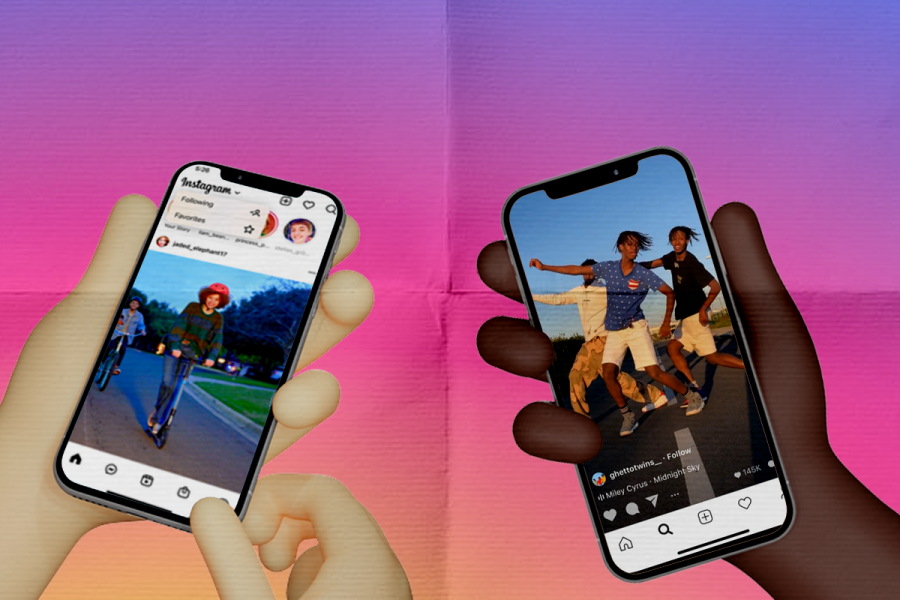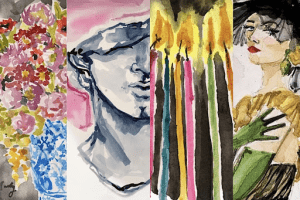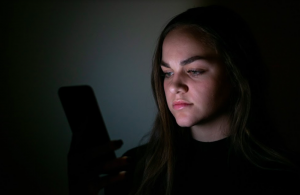Video Killed the Instagram Star
Amid the internet’s move towards videos, we should not abandon still photography on social media
September 14, 2022
The head of Instagram, Adam Mosseri, released a video on July 26, 2022 explaining recent changes to the platform in response to criticism from countless users, including celebrities like Kylie Jenner and Kim Kardashian.
The backlash follows Instagram’s new emphasis on short videos, called Reels, that are remarkably similar to TikTok, an app that has dominated the video market. Many users argue that Instagram is trying to become TikTok, especially as engagement with still photos has decreased and suggested or sponsored posts have overtaken content from friends and family in users’ feeds. Home feeds seem to be pushing the Reels feature, which mostly consists of TikTok videos downloaded and reposted to Instagram.
Although Instagram rescinded the update in response to the pushback, Instagram’s effort to abandon still photos is a testament to the new wave of intense emphasis on video, animations and other types of moving content. This trend is extremely disheartening: Instagram’s roots are embedded in photos, where early users shared their morning lattes, beloved pets, and otherwise mundane skyline views while commuting to work. Sharing this type of content allowed users to romanticize aspects of their day-to-day lives that would otherwise go unnoticed. By burying image-only posts in users’ feeds, Instagram is destroying its roots in strictly photo-based content.
Photos are an intimate experience. Oftentimes, only a select few know the true origins behind an otherwise normal photo. They leave something to be desired. If we want to understand it, we have to actually study it instead of having everything visualized for us through movement. There is a shared enjoyment in seeing a photo that appears simple but knowing its construction required behind-the-scenes work. Photos force us to interact with content in a way video never will.
The medium of photos allows us to share something without sharing everything. They allow us to conceal attitudes we would rather hide, like concealing family tension for the sake of a nice photo to hang on the wall. Photos leave more room for interpretation by the audience, which is essential to art. On the other hand, the interpretation of a video becomes more uniform through consistency in things like tone of voice and body language. If everyone gathers the exact same message from a piece of art, the content inspired by it is more likely to be uniform, and after a few cycles, individual interpretation is erased.
Video content is certainly still valuable. Both photo and video should be able to coexist without platforms like Instagram forcing one over the other by decreasing engagement. But we cannot afford to lose sight of the abstractness of photography throughout the shift to video.
Instead of large platforms dictating the format of content that artists and casual users should be creating and consuming, users should be able to choose. Artists of still images should not have to worry about losing their livelihood because of a business decision made by social media platforms. As explained by Instagram user and photographer Anastasia Pagonas in her “Ode to Instagram”: “The still image has been deprioritized in favor of quick video; my sage friend said of it: ‘the death of stills and stillness.’”
In a society that constantly encourages us to keep moving and “hustle,” is it inevitable that this ideology will spread to our art? By removing stillness from our art, are we removing stillness from our lives as well? Is this simply a business decision made by Instagram to make advertising easier and a seamless part of our daily lives? Is it a coincidence that we receive ads for things we’ve talked about days before?
Advertising has become a major part of Instagram, and according to one Instagram user, out of the first 16 posts on their home feed, 14 were suggested posts, ads or sponsored content from accounts the user did not follow.
Users are getting fed up with being forced to transition from consuming photo to video content, which has manifested through the popularity of new apps like BeReal, an app that sends users a notification at random times of the day to capture and upload a photo within two minutes.
We should not abandon still photos for the sake of modernity. We should instead choose platforms that allow us to express ourselves through whatever medium we prefer. Users are getting fed up with being forced to transition from consuming photo to video content, which has manifested through the popularity of new apps like BeReal, an app that sends users a notification at random times of the day to capture and upload a photo within two minutes.
BeReal’s popularity shows that users aren’t ready to give up the still photo, and if Instagram can’t meet their demands, we will find an app that will.
The general public will not stand by and wait for Instagram to deal with its identity crisis. All individuals, both general consumers and influencers, should call on the app to make the necessary changes to save still content. Users made Instagram what it is, and only users can decide if the app survives.













